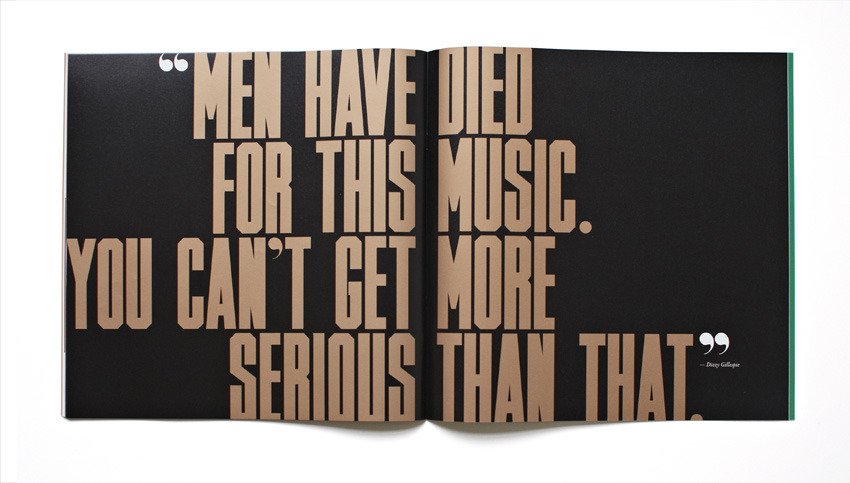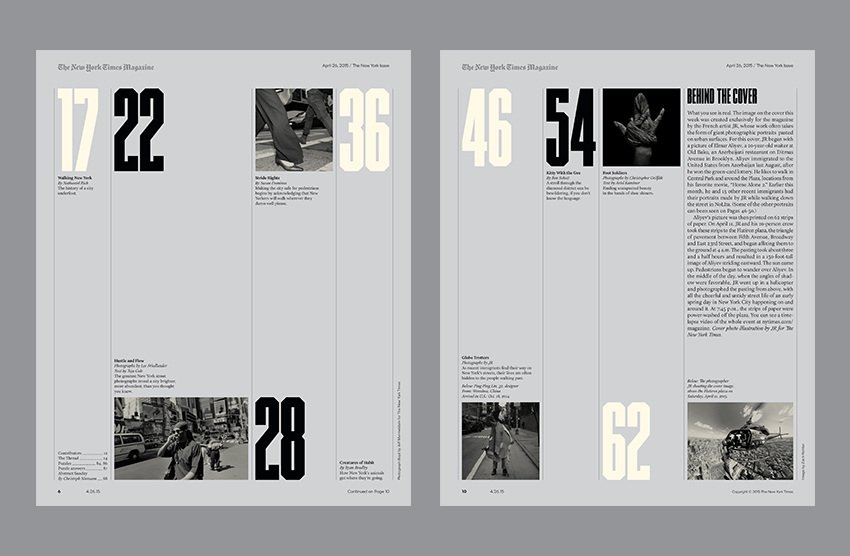Timmons NY is a bold, condensed display face that is most defined by its chamfered corners. The aesthetic is both athletic and authoritative, evoking the designs of newspaper headline typefaces from the late 1800’s.
Timmons was designed by Matt Willey for use in the Walking New York issue of of the New York Times Magazine in 2015[1]. It’s that specific use case that reveals the unique character of the typeface compared to other incisive headline fonts—its surprisingly sophisticated editorial design flair[3]. While many typefaces in this style are brutish and loud, Timmons NY projects an elegant side through the inclusion of thoughtful alternates to heavier characters and rounded quotation marks and apostrophes which soften the blocky characters and almost recast the entire face in a knowing, tongue-in-cheek light. Willey knows what this style of typeface is typically used for and by inserting an almost Didone-style set of alternate punctuation he demands that this unconventional typeface style be treated as an equal in the editorial space. Timmons was donated to the BuyFontsSaveLives campaign, and all sales proceeds go to cancer charities.
Timmons NY contains numerous alternate characters which alter the voice of the font in ways that range from subtle to dramatic. These alternates allow the designer a lot of flexibility in how the typeface projects itself and give an extended life to what is ultimately a single weight display face. It thrives in stark, high contrast situations where the thick, rigid simplicity of the letterforms can take on a monolithic quality.













